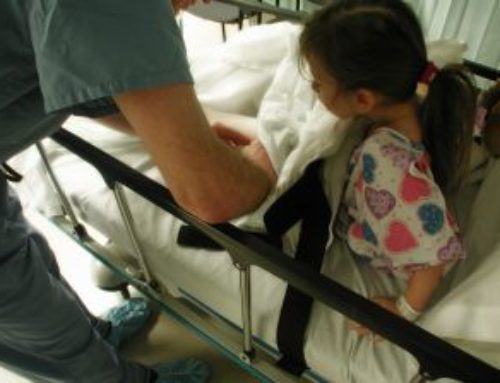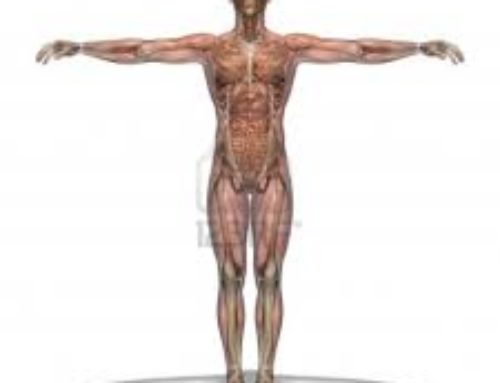
Introduction:
Emphysema can be defined as a permanent enlargement of the alveolar spaces in the lung and a destruction of their walls. The alveolus often referred to as “little air sacs” are the primary site for gas exchange and are found in the respiratory areas of the lungs.
Emphysema falls in the category of being a Chronic Obstructive Pulmonary Disease or COPD.
There are two broad categories of lung disease:
- Obstructive Disorders, which are characterized by the narrowing of the airways. examples include, Asthma and COPD (bronchitis and emphysema).
- Restrictive Disorders are generally classified by the amount of lung tissue that becomes stiff and unable to expand appropriately. An example of a restrictive disorder is Interstitial Lung Disease or ILD.
In emphysema the inflammatory cells under stress release an enzyme called elastase which over time will result in the loss of the elastic tissue within the alveolar septa. This will reduce the gas exchange capabilities of the individual air sac due to a decrease in the area available for diffusion. Loss of this structural integrity will increase the work of breathing and result in poor distribution of ventilation.
Causes:
In the United States, emphysema is the most common of all respiratory diseases that cause death. It is a disease that is often caused by exposure to toxic chemicals such as dust from grain, cotton, wood, mining fumes and extended contact with tobacco smoke.
Most people with a history of tobacco smoking are likely to present symptoms between 50-60 years of age. Emphysema is rare in people under the age of 45 years. Men are known to be more susceptible to the disease than women. Almost half the functioning lung tissue can be damaged before emphysema is noticed.
Another cause of the disease is the absence of the protein alpha 1-antitrypsin (AAT) which is otherwise called the “lung protector”. In the absence of AAT the inherited form of emphysema becomes inevitable. The approximate age of developing AAT deficiency emphysema is between 32 and 41 years. Tobacco smoking will significantly increase the severity of this type of emphysema.
80 to 90% of incidents of emphysema occur from smoking and significantly fewer are the result of the inherited type of emphysema. People who smoke, pipes and cigars are less likely to inhale their smoke however these too can impair lung function. The chronic use of the drug marijuana is particularly harmful as this type of smoke, is inhaled deeper into the lungs and held.
Signs and Symptoms:
Emphysema is a gradual disease with no sudden onset. Shortness of breath during activity or exercise is often the primary symptom for the initial doctor’s visit. As the disease progresses, a short walk can be enough to stimulate a serious difficulty in breathing.
It is common to have bronchitis (another COPD) before developing emphysema.
Chronic or mild cough: this can be followed with a discoloured sputum production which is disregarding as a “smokers cough”
Chronic Fatigue: prolongedfeelings of tiredness
Weight Loss: can be associated with emphysema
“Barrel” Chest: refers to the change in shape often seen in patients with COPD. In emphysema the lungs end to over inflate with air and the body has to compromise its normal anatomy.
Cyanosis: can also develop in patients with emphysema and involves the bluish discolouration of the skin and mucous membranes which is the result of deoxygenated blood at the skin surface.
Digital Clubbing or “finger clubbing”: a deformity of the fingers and fingernails. This condition is linked with many different diseases especially those involving the heart and lungs.
Audible expiratory Wheeze: this can be present at rest in severe cases or during minimal activity.
Polycythemia: overproduction in the overall number of blood cells in the body. This can be causes by an extremely low level of oxygen in the body and hence, is linked to emphysema.
Asterixis: the involuntary tremor of the wrist. This is seen in patients who retain carbon
dioxide.
Other symptoms associated with Emphysema:
- Skipped breaths
- Difficulty sleeping
- Morning headaches
- Difficulty breathing when lying down
- Chronic fatigue
- Swelling of the extremites
- If there is a history of smoking fingernails can be stained from cigarette tar
Diagnosis:
- A Pulmonary Function Test: This non-invasive test determines, the amount of air in the lungs, the amount of air flow in and out of the lungs and the amount of gas exchanged from the alveoli to the capillaries. The test is usually conducted before and after the use of medication to test the patient’s response to the medication.
- Chest X-ray: This is used to rule out other diseases that may appear on an x-ray. In the advanced cases of emphysema and x-ray can appear normal.
- Arterial Blood Gas Analysis: This test measures the oxygen from your lungs into your blood and the removal of carbon dioxide.
- Computerized Tomography (CT) Scan: Is often a better diagnostic tool than a simple x-ray as it allows the organs to be seen in 2Dimentional viewing, however the severity of the disease is much better understood after a pulmonary function test.
- Pulse Oximetry: This non-invasive technique is used to determine wether supplemental oxygen is needed. It is performed with a little devise that clips on to the finger that measures oxygen present in the blood. This test is performed both at rest and during exercise and is occasionally kept on overnight.
Complications:
Sufferers of emphysema are at a higher risk of contracting other diseases and infections increasing the mortality rate of the disease. These include, reoccurring respiratory infections, lung cancer and coronary failure. Eventually emphysema can limit a person’s daily activity. In advanced cases, patients who are limited to a chair or bed may continuously suffer from shortness of breath. Emphysema is a serious condition that can be worsened and fatal by any other type of lung infection.
In progressively worsening emphysema, the heart is put under stress. The heart muscle has to work harder to supply the lungs with enough blood. With the damaged lung tissue and damage to the circulatory system, this becomes strenuous on the heart. This condition will eventually lead to failure of the right side of the heart.
Failure of the circulatory system can often lead to pulmonary hypertension, a common complication and is the result of abnormally high blood pressure in the arteries of the lung.
Treatment:
The goal of most effective emphysema treatment is to decrease the level of discomfort and prevent any further progression of the disease.
Aside from prescribed medication and treatment, quitting smoking is one of the most significant treatments in preventing any further damage to the lungs.
Oxygen Therapy: This is normally from 12-24 hours a day and can increase survival of patients with advanced cases of emphysema. Oxygen treatment can also increase brain and heart function, reduce headaches and insomnia.
Bronchodilators are drugs that relax the airway to facilitate easier breathing.
Steroids may be used during periods of relapse.
Antibiotics are often used to control a bacterial infection such as pneumonia.
Mucolytic drugs are administered to loosen and clear the airways of stubborn mucous by breaking up sputum. This medication can be presented in tablet or oral form.
Breathing exercises are often prescribed to increase strength in the pulmonary muscles.
Alpha 1- Proteinase Inhibitor (A1P1)is the drug administered to only those patients who suffer from the ATT inherited form of emphysema.
Lung Volume Reduction Surgery is used to remove seriously damaged sections of the lung. This treatment poses positive results in the short term however seriously increase the mortality rate in patients with severe forms of the condition.
Lung Transplant is an effect form of treatment if most other treatments have failed.
Pulmonary Rehabilitation Programs, cover detailed and specific exercises and nutritional advice and behavioural interventions that will aid the recovery process.
Postural drainage: This aids the removal of secretion from the airways.
Chest percussion: A procedure of tapping the back and chest to help promote the loosing and ultimately secretion of think sputum.
Prevention:
On going research is being conducted to minimize the progression of emphysema and prevention of the condition.
Smoking and other environmental factors such as dust and fume should be avoided and prevented as far as possible. Avoid areas of air pollution from second hand cigarette smoke. Reducing exposure to pollutants by updating knowledge of weather conditions and work environments can prove to reduce the progression of the disease.
Regular consultations with doctors will keep the common cold and other irritants under control. Regular updates on medications and cough and flu vaccines can also aid control the severity of the condition.
Maintaining a healthy diet by consuming plenty of liquids helps to loosen the respiratory secretion, so they can be easily removed by the body through coughing.
It is recommended that avoiding extreme temperatures and high altitudes can maximize comfort. Consulting professionals for special precautions to fly should be considered.
Maintenance of a balanced diet is recommended. A high protein intake is suggested to be beneficial for this condition.






Leave A Comment